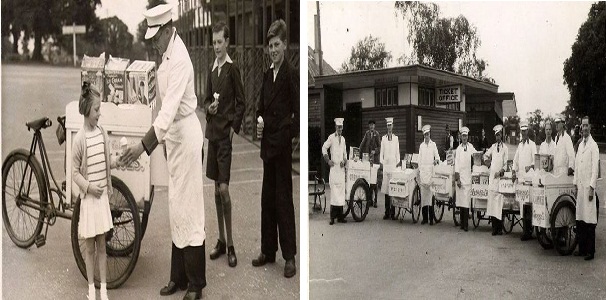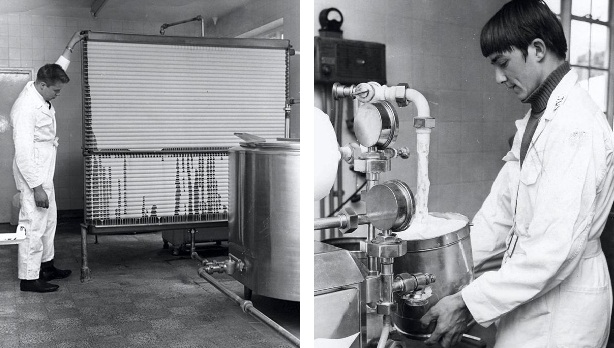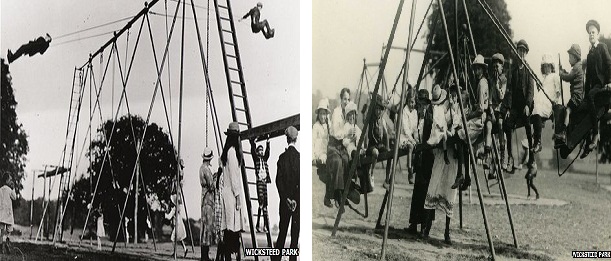
The search is on for the lost special ice cream recipe that was so popular in Britain during and even after WWII – Wicksteed Park ice cream made of goats’ milk.
When WWII waged on, milk was one of the items that was rationed reportedly to 2 to 3 pints per adult on a weekly basis. But Wicksteed Ice Cream flourished on despite of the rationing scheme imposed by the British government because bosses of the well-known park located in Kettering, Northamptonshire had bought a herd of goats and used their milk to make the ice cream.
In time, the special goats’ milk ice cream became so popular with the Brits and its sales continued on even after the war and rationing ended until the 1970s; thousands of servings of the said ice cream were produced annually throughout these times.
However, its production stopped when its production equipment malfunctioned and needed replacing and eventually, the ice cream recipe got lost through the years.
Wicksteed Park was founded by Charles Wicksteed, who is considered as the inventor of the modern-day slide and swing duo, in 1921; currently it is being run by a charitable trust.
The said organization has started an archive project which aims to take on the memories of the countless visitors Wicksteed Park had over the decades so that a detailed history about it could be provided – from the time it was built to the many innovations it had to undergo to make it the “home of children’s play”.
One of the archive project’s main aim is to identify the key persons featured in a number of old photographs and to be able to locate some of them so that they, in turn, can help in providing awareness and information about Wicksteed Park which had been forgotten.
The staff responsible for making the once famous and unique Wicksteed Park ice cream is among those key persons being looked into in hopes that they can shed light in the rediscovery of its one-of-a-kind recipe.
For decades, the ice cream was very well-known among park visitors; its uncommon taste due to the fact that the main ingredient used for making it, the milk, was from the herd of goats brought by the Wicksteed Park trustees. Cow’s milk was a hard commodity to come by in those times as it was rationed at the height of WWII.
The ice cream parlor in the pavilion first opened in 1935 while Wicksteed Park’s very own ice cream factory was built in the 1950s.

The main reason park personnel are keen on finding the lost ice cream recipe is because they are planning on relaunching it this year at the 75th anniversary of the start of WWII.
“The Wicksteed ice cream was enjoyed by generations of people but sadly production stopped when the original equipment needed replacing, which was prohibitively expensive,” Alasdair McNee, managing director of Wicksteed Park, commented.
“However, we have old photographs of staff making the ice cream from the 1950s and would love to trace them or their relatives or indeed anyone who can give us an insight into the recipe which made it so special and the flavors which were produced,” he added.
Recently, they were able to dig up a top of a Wicksteed chocolate-flavored ice cream tub; however, this is just one of the many flavors Wicksteed Ice Cream had.
“It was unique and it would be lovely to bring it back on sale next summer to coincide with the 75th Anniversary of the start of the war, particularly as it has such strong connections with that time,” McNee pointed out.
Looking for the lost ice cream recipe is collaborated by Community Link Manager Charlotte Widgery, supported by the Heritage Lottery Fund and is considered part of the park lake’s restoration project.
Charlotte has commented about how the park is of vital importance of the historicity of the region and has been serving the community for over 90 years. The said restoration project will really be an advantage not just to the park itself but to its users and the locality as well.

The project has consistently called on the local people as well as park lovers to dig up old photographs, documents, postcards and other items related to the site throughout the years to become part of the archive project.
“Wicksteed Park holds a special place in the hearts of many people across the UK and around the world and we are constantly amazed at the memories and items of interest which people hold. All these memories will be carefully recorded and shared with the public through exhibitions and in other ways.”